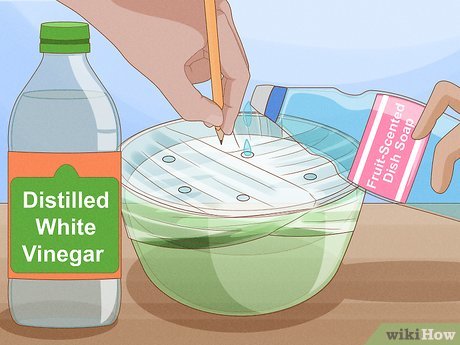Essential Guide to Remove Poison Ivy Safely in 2025
Poison ivy is a prevalent plant in many outdoor environments, often leading to unwanted skin reactions and discomfort for those who come into contact with it. Understanding how to recognize this plant and ensuring proper removal and treatment are crucial for maintaining safety, particularly in gardening and outdoor activities. In this essential guide, we will cover various aspects of poison ivy removal, including identification, prevention, effective treatments, and safety precautions.
This guide is structured to help you navigate the complex world of poison ivy, including practical solutions for poison ivy skin care and comprehensive strategies for both home and garden maintenance. By the end of this article, you will know how to safely and effectively manage poison ivy, ensuring your outdoor spaces are safe for you and your family.
Key Takeaways: Learn to effectively identify and remove poison ivy, explore the best treatment options, and implement preventive measures to stay safe outdoors.
Understanding How to Identify Poison Ivy
Building a solid foundation for managing poison ivy begins with proper identification. There are several characteristics to recognize when distinguishing it from similar plants, such as poison oak and sumac.
Recognizing the Plant's Characteristics
Poison ivy usually appears as a small shrub or vine, with clusters of three shiny leaflets. The adage “leaves of three, let it be” helps many identify the plant. The leaves can vary in shape and size but often feature pointed tips. In the fall, the leaves turn vibrant shades of red and orange, making them easier to spot, but also more alluring during outdoor activities.
Additionally, poison ivy can grow in various forms; while it is most commonly seen as a low shrub, it can also thrive as a climbing vine on trees or buildings. Understanding these characteristics is essential for anyone who spends time outdoors.
Poison Ivy vs. Poison Oak and Sumac
Many individuals confuse poison ivy with similar plants, including poison oak and sumac. Poison oak has a leaf structure resembling that of poison ivy but often has a more lobed appearance. On the other hand, poison sumac typically displays greater leaf complexity and can be found predominantly in wetland areas. Knowing the differences helps prevent accidental exposure.
Common Locations for Poison Ivy Growth
Recognizing where poison ivy commonly grows can significantly aid in avoidance. It tends to thrive in wooded areas, along paths, and near water sources. Familiarizing yourself with these environments allows you to enjoy the outdoors while minimizing the risk of contact.
With these fundamentals established, let's explore effective methods for getting rid of poison ivy before and after exposure.
Effective Poison Ivy Removal Techniques
Once you've identified poison ivy in your vicinity, the next step involves learning how to safely remove it. There are several methods for effective removal, each varying in efficiency and safety.
Manual Removal of Poison Ivy Vines
For small infestations, manual removal can be a viable option. Use gloves and protective clothing to prevent skin exposure. Grasp the base of the vine and pull it slowly and steadily, making sure to uproot as much of the plant as possible. It’s crucial to remove all roots, as segments left behind can regrow.
Ensure that any tools used, such as shovels or clippers, are cleaned afterward to remove any residual oils that may cause skin reactions. Tools should be wiped down with rubbing alcohol to mitigate any risk of contamination.
Chemical Treatment for Poison Ivy
In cases of larger infestations, chemical treatments may be necessary. Products containing glyphosate or triclopyr are common for controlling poison ivy. When using these chemicals, follow the manufacturer’s instructions carefully to prevent harm to surrounding plants and wildlife. Applying these treatments on a dry and calm day minimizes drift and increases effectiveness.
Preventive Landscaping Against Poison Ivy
For those looking to establish gardens without the threat of poison ivy, certain plants can act as natural deterrents. Installing barriers or selecting native ground covers can reduce the chances of poison ivy overtaking your garden area. For instance, consider planting non-invasive species that may outcompete poison ivy for sunlight and nutrients.
With various techniques available for removal and prevention, understanding the best approaches can help you manage the risks associated with poison ivy. Next, let's discuss the signs and symptoms of poison ivy rashes and how to treat them effectively.
Poison Ivy Treatment and Skin Care
Experiencing a poison ivy rash is not only uncomfortable but can also lead to distress. Knowing how to treat these rashes is essential for quick recovery and itch relief.
Recognizing Poison Ivy Rash Symptoms
Symptoms of poison ivy exposure often include redness, swelling, and blisters on the skin. The intensity can vary based on the individual's sensitivity to the urushiol oil that the plant secretes. Some may experience severe blistering, while others might have only mild irritation.
Home Remedies for Poison Ivy Rash
Several home remedies for poison ivy rash can provide relief. Applying cool compresses can help soothe irritated skin. Additionally, oatmeal baths are known to relieve itching and calm inflammation. Prepared colloidal oatmeal is ideal for this purpose and can be easily added to bathwater.
Using baking soda as a paste can also alleviate itching. Mix baking soda with water to create a thick paste and apply it directly to the rash; this method offers temporary relief from itching and irritation.
Topical Treatments and Over-the-Counter Options
Topical creams containing hydrocortisone can reduce inflammation and itching. Over-the-counter antihistamines may also help manage discomfort. It's essential to consult with a healthcare professional if the rash persists or worsens.
Following these treatment options can foster efficient healing following exposure to poison ivy. Now, we will examine preventative measures to avoid contact with this irritating plant.
Poison Ivy Preventive Measures and Safety Tips
Aside from treatment, implementing preventative strategies plays a critical role in avoiding poison ivy exposure altogether. Understanding precautionary methods helps families, particularly with children, to engage safely in outdoor activities.
Poison Ivy Protective Clothing
Wearing proper clothing is a vital preventative measure. Long sleeves, boots, and gloves can significantly minimize skin exposure when working in areas where poison ivy might be present. Opting for materials that are less porous can help prevent the oils from reaching the skin.
How to Wash Poison Ivy Oils from Skin
If you suspect exposure, washing the affected area immediately with soap and water can reduce the risk of developing a rash. Make sure to focus on areas that may have come into contact with the plant's oils, including hands, arms, and legs.
For washing clothing or gear that may have come into contact with poison ivy, use hot water and a strong detergent. It might also be necessary to wash them separately to avoid cross-contamination.
Educating Children About Poison Ivy
Moreover, teaching children about poison ivy and its dangers is crucial. Engaging them in conversations about avoiding plants that look similar can empower them during outdoor play. Visual cues like hand-drawn sketches of poison ivy can foster awareness.

Implementing these measures can significantly reduce the risk of poison ivy exposure and keep families safe while enjoying nature. Let’s now explore some common questions regarding poison ivy management.
Poison Ivy Q&A: Common Concerns
What should I do if I've touched poison ivy?
Immediately wash the affected area with soap and water to minimize oil transfer. If a rash develops, using topical treatments can alleviate symptoms. If severe reactions occur, consult a healthcare provider.
How long do the symptoms last?
The duration can vary based on individual sensitivity, but a typical poison ivy rash may last from a few days up to several weeks, depending on the severity of the reaction.
Can pets get poison ivy?
Yes, pets can also suffer from poison ivy exposure. Ensuring pets do not roam in areas with this plant and washing them if they have been exposed can help prevent irritation.
Understanding these questions and seeking answers equips families with essential knowledge for managing poison ivy effectively. Finally, let’s summarize the importance of recognizing and managing poison ivy and its associated risks.
Conclusion: Managing Poison Ivy in the Outdoors
Proactively managing poison ivy involves recognizing the plant, implementing preventative strategies, and knowing treatment options should exposure occur. Utilizing the information from this guide can protect you and your family while engaging in outdoor activities.
Staying informed about poison ivy precautions, understanding how to recognize and remove it, and knowing how to treat a rash can lead to a safer outdoor experience for everyone. As you venture into nature in 2025, remain vigilant and enjoy your time outdoors without the worry of poison ivy.

